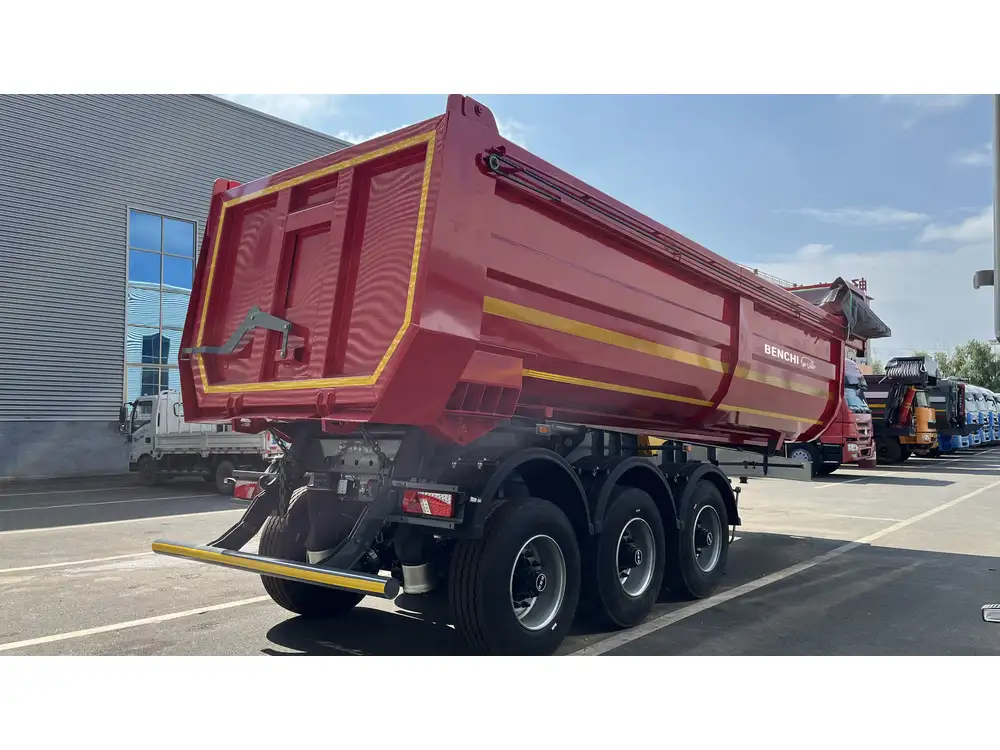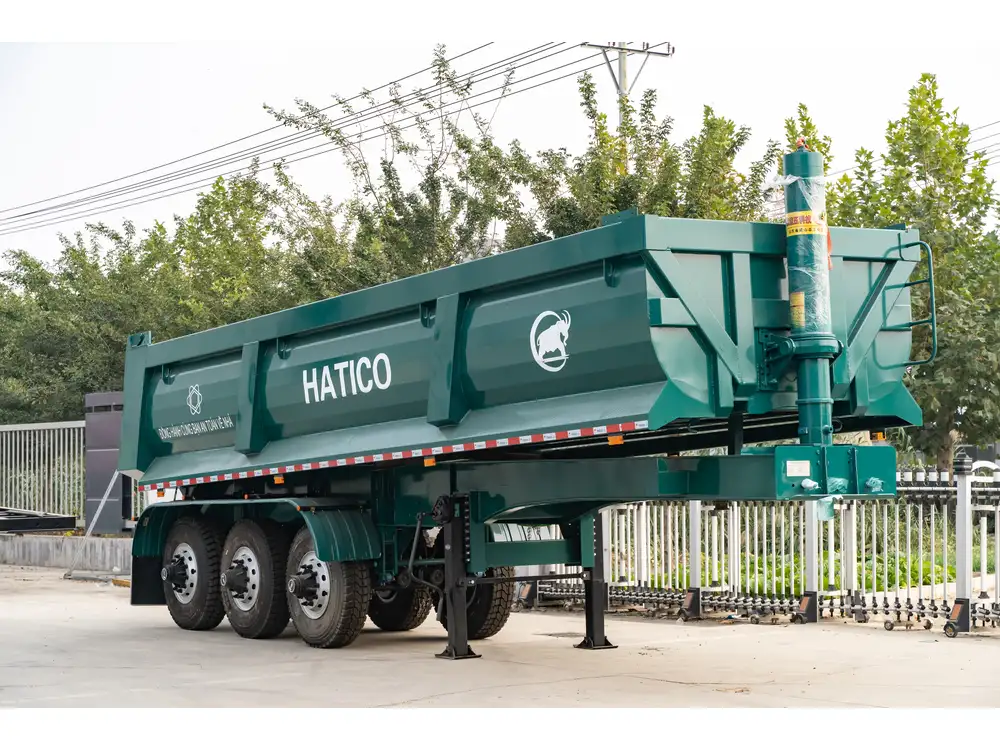Understanding ISO Tank Skeletal Trailers
In the realm of logistics and transportation, the ISO tank skeletal trailer emerges as a vital component for efficiently moving hazardous and non-hazardous liquids across various terrains. These trailers offer a unique combination of sturdiness, flexibility, and efficiency, designed to accommodate International Organization for Standardization (ISO) tanks. This comprehensive guide will delve into the nuances of ISO tank skeletal trailers, addressing critical aspects such as design, functionality, applications, and advantages, thereby equipping readers with the necessary insights for informed decision-making.
What Are ISO Tank Skeletal Trailers?
ISO tank skeletal trailers, also known as tank chassis, are specialized semitrailers engineered to transport ISO tanks securely. They comprise a robust frame and dual axles engineered to handle heavy loads while ensuring optimal stability during transit. The frame’s design allows it to support standard ISO tank dimensions—typically 20 or 40 feet—facilitating seamless loading, unloading, and transportation processes.

Key Features of ISO Tank Skeletal Trailers
| Feature | Description |
|---|---|
| Robust Construction | Built with high-strength steel to endure the heavy weights of ISO tanks and resist wear and tear. |
| Customizable Design | Various models accommodate different ISO tank sizes and operational needs, enhancing versatility. |
| Compliance | Meets international safety and transportation standards, ensuring secure transit of hazardous materials. |
| Easy Loading/Unloading | Equip with hydraulic systems or ramps for simplified loading and unloading processes. |
| Enhanced Stability | Features advanced suspension systems that improve load stability and reduce wear on tires and highway. |
The Importance of Design in ISO Tank Skeletal Trailers
The design of an ISO tank skeletal trailer is pivotal, as it directly impacts usability, safety, and efficiency. Trailers are often designed to be lightweight while maintaining the strength necessary to support heavy ISO tanks. This balance of weight and strength is essential for:
- Fuel Efficiency: Lighter trailers contribute to reduced fuel consumption, allowing for cost savings over long hauls.
- Maneuverability: A well-designed trailer enhances the driver’s ability to maneuver through tight spaces, improving operational efficiency.
- Load Distribution: Effective weight distribution systems within the design minimize wear on tires and suspension, extending the trailer’s lifespan.
Applications of ISO Tank Skeletal Trailers
ISO tank skeletal trailers play a pivotal role across various industries, emphasizing their versatility and capability. Key applications include:
- Chemical Transportation: The trailers are extensively used to transport chemicals—specifically hazardous substances—such as acids, solvents, and fuels.
- Food and Beverage Industry: Non-hazardous liquids like edible oils and wines are commonly transported using these trailers, requiring stringent compliance with safety standards.
- Pharmaceuticals: Specialized ISO tanks designed for pharmaceuticals can be transported via skeletal trailers, ensuring temperature control and safety.
- Agricultural Grains and Liquids: For the agricultural sector, trailers are utilized for transporting liquid fertilizers and other agricultural liquids.

Advantages of Using ISO Tank Skeletal Trailers
The choice of ISO tank skeletal trailers offers numerous advantages that resonate with manufacturers and logistics providers alike. These include:
Cost-Effectiveness:
- Lower operational costs due to enhanced fuel efficiency.
- Reduced maintenance costs from robust trailer designs that withstand rigorous use.
Safety Standards Compliance:
- Designed to adhere to international safety regulations, ensuring the secure transportation of hazardous materials.
- Features such as reinforced frames and safety mechanisms mitigate risks during transit.
Operational Versatility:
- Capable of carrying various types of ISO tanks, allowing operators to respond swiftly to diverse logistical needs.
- Seamless integration with standard loading and unloading systems across various transport hubs.
Efficiency in Handling:
- Equipped with features that streamline loading and unloading processes, minimizing downtime and maximizing productivity.
- Adjustable components that enable compatibility with different types of ISO tanks.
Sustainability:
- Eco-friendly design considerations, such as reduced weight and improved aerodynamics, contribute to lower carbon footprints during transportation.
Market Trends Impacting ISO Tank Skeletal Trailers
The market for ISO tank skeletal trailers has been evolving due to technological advancements and changing regulations. Key trends influencing the industry include:
- Automation in Loading/Unloading: Increasing investments in automation technologies streamline the logistics processes, resulting in heightened efficiency.
- Digital Integration: The incorporation of GPS tracking and telematics is augmenting management capabilities, offering real-time insights into transport conditions and ensuring timely deliveries.
- Sustainability Regulations: Stricter regulations by environmental agencies necessitate the use of more sustainable vehicles, fostering demand for lighter and more efficient tank trailers.
Comparative Analysis: ISO Tank Skeletal Trailers vs. Traditional Trailers
| Feature | ISO Tank Skeletal Trailers | Traditional Trailers |
|---|---|---|
| Cargo Type | Designed for ISO tanks with liquids | Versatile but often not optimized for specific liquid transport |
| Structure | Light yet robust construction | Generally heavier and bulkier |
| Safety Compliance | Adheres to stringent international standards | Varies; often less focused on hazardous materials |
| Efficiency | Optimized for reduced fuel consumption | Fuel efficiency dependent on cargo type |
| Customization | Highly customizable to fit ISO tanks | Customizations vary; less focus on ISO dimension compatibility |

Common Issues Faced by Users of ISO Tank Skeletal Trailers
While ISO tank skeletal trailers present numerous advantages, users may encounter specific challenges that require attention:
Market Saturation: With numerous manufacturers in the market, choosing a quality provider can be daunting. Conduct thorough research and evaluate past performance and customer testimonials before making a decision.
Compliance Complexities: Navigating the intricate web of international transportation regulations necessitates an in-depth understanding of legal requirements to avoid penalties and ensure safe transport practices.
Maintenance Challenges: Regular maintenance is crucial in prolonging the lifespan of trailers. Users often overlook critical components, leading to potential failures during transit.
Operational Costs: While ISO tank trailers can reduce fuel costs, initial investment and maintenance can be significant. Users must compute total cost of ownership to make informed decisions.
Technological Adaptation: The transition to automated and digital systems, while beneficial, can pose challenges for organizations with established processes. Adequate training and support are essential for a smooth transition.
Frequently Asked Questions (FAQs) About ISO Tank Skeletal Trailers
1. What is the average lifespan of an ISO tank skeletal trailer?
The typical lifespan ranges from 10 to 15 years, contingent upon usage, maintenance, and environmental factors.
2. Can ISO tank skeletal trailers transport temperature-sensitive products?
Yes, specialized ISO tanks designed for temperature-sensitive products can be securely transported using these trailers.
3. How do I ensure compliance with safety regulations?
Engage with organizations knowledgeable in CARGO and transportation compliance to remain updated on regulations and standards.
4. Are custom designs available for ISO tank skeletal trailers?
Yes, many manufacturers offer tailored designs to meet specific clients’ operational needs, ensuring seamless integration with existing logistics frameworks.
5. What type of maintenance should be expected?
Regular inspection of tires, brakes, and suspension systems, along with routine checks for rust and structural integrity, is imperative to ensure optimal performance.
Conclusion
The use of ISO tank skeletal trailers plays an indispensable role in the transportation of liquids across various industries. Their robust construction, compliance with international safety standards, and operational versatility position them as an essential asset in the logistics chain. By understanding the nuances of these trailers—from their design to applications and advantages—logistics providers are better equipped to optimize their operations. As market trends and technology continue to evolve, staying informed about ISO tank skeletal trailers will ensure competitiveness and long-term success in an ever-changing landscape.
Selecting the appropriate trailer, investing in regular maintenance, and being responsive to market demands are key strategies that will drive efficiency and safety in the transportation of liquids. By leveraging the insights shared in this guide, businesses can navigate the complexities of the segment effectively and remain at the forefront of industry advancements.



